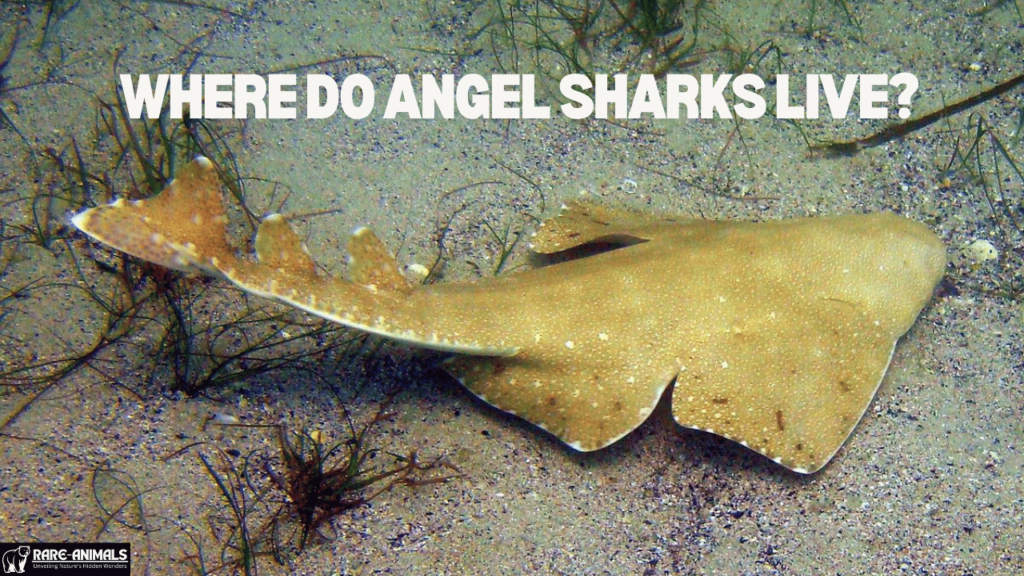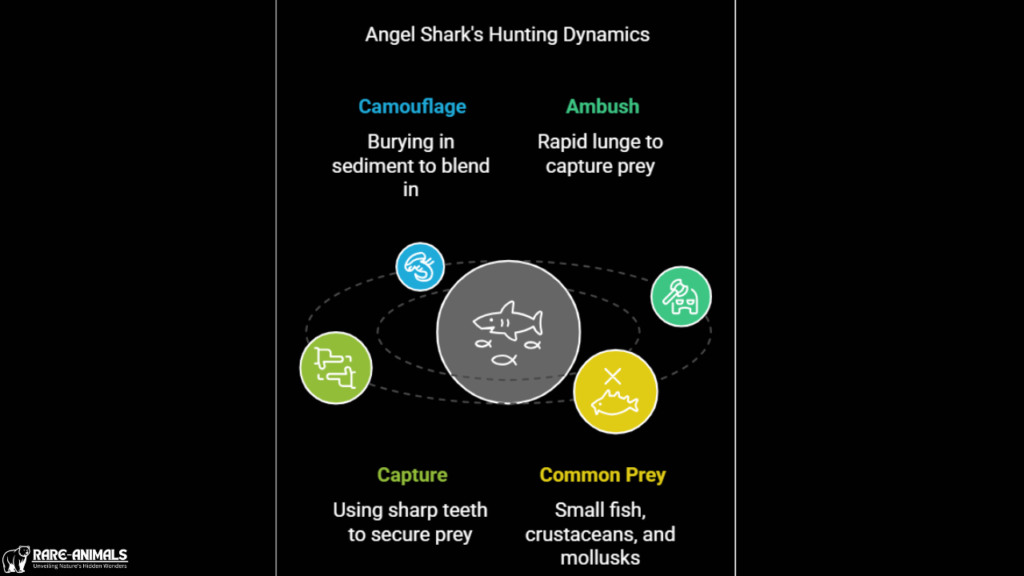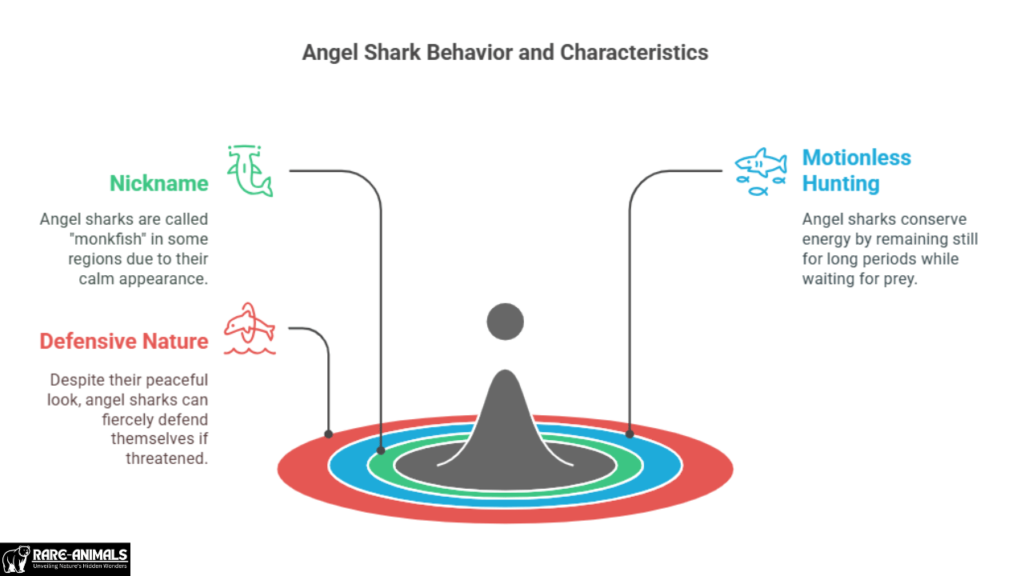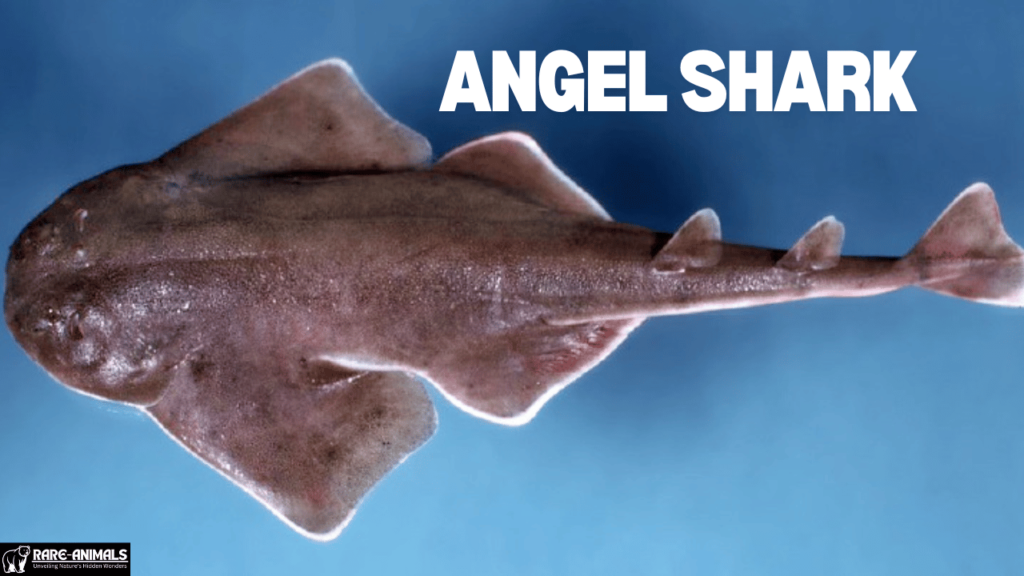The angel shark, often referred to as the “sand devil,” is a fascinating and elusive marine predator. Known for its unique flat body and camouflage abilities, this remarkable species is perfectly adapted to life on the ocean floor.
Let’s dive into the world of angel sharks, uncovering their habits, habitats, and the challenges they face in an ever-changing marine environment.
What Is an Angel Shark?
Angel sharks belong to the family Squatinidae and are part of the genus Squatina. Unlike most sharks, their body resembles that of a ray, making them easily distinguishable. They inhabit sandy or muddy bottoms where their flattened bodies allow them to blend seamlessly with their surroundings.
Physical Characteristics
- Body Shape: Angel sharks have a broad, flattened body with large pectoral fins.
- Coloration: Their mottled brown, gray, or sandy coloration provides excellent camouflage against the ocean floor.
- Size: Most species range between 1.5 to 2.5 meters in length.
- Mouth and Teeth: Positioned underneath their head, their mouths are equipped with sharp teeth ideal for capturing prey.
Unique Behavior
Angel sharks are ambush predators. They bury themselves in the sand and wait patiently for unsuspecting prey to swim by. With a sudden burst of speed, they lunge forward, capturing their prey in milliseconds.
Where Do Angel Sharks Live?
Angel sharks are primarily found in temperate and tropical waters worldwide. Their habitats range from shallow coastal zones to depths of up to 150 meters.
Preferred Environments
- Sandy and Muddy Bottoms: Ideal for camouflage and hunting.
- Seagrass Beds: Provide cover and attract prey species like fish and crustaceans.
- Coral Reefs: Some species are found near reef systems where biodiversity is high.
Geographic Distribution
Angel sharks are found in:
- Eastern Atlantic, including the Mediterranean Sea.
- Western Pacific regions.
- Coastal waters of the Americas.
Seasonal Movements
Some populations migrate seasonally, moving to shallower waters during warmer months for breeding and feeding.

Diet and Hunting Strategies
Angel sharks are carnivorous, relying on stealth and speed to capture their prey.
Common Prey
- Small fish (e.g., bream, flatfish)
- Crustaceans (e.g., crabs, shrimp)
- Mollusks (e.g., squid)
Hunting Methodology
- Camouflage: They bury themselves in sediment, leaving only their eyes and spiracles visible.
- Ambush: When prey is within striking range, they lunge forward, opening their mouth rapidly to create suction.
- Capture: Their sharp teeth ensure prey has little chance of escape.

Conservation Status of Angel Sharks
Unfortunately, angel sharks are among the most endangered marine species. Overfishing, habitat loss, and accidental bycatch have severely impacted their populations.
Threats to Angel Sharks
- Overfishing: Angel sharks are often caught as bycatch in trawling and net fishing.
- Habitat Degradation: Coastal development and pollution have reduced suitable habitats.
- Slow Reproduction Rates: They have long gestation periods and produce few offspring, making population recovery slow.
Conservation Efforts
- Protected Areas: Establishing marine reserves where angel sharks are common.
- Fishing Regulations: Implementing gear restrictions to reduce bycatch.
- Research and Awareness: Promoting studies on angel shark biology and public education.
Organizations Involved
- IUCN Shark Specialist Group
- Marine Conservation Society
- Local conservation initiatives in coastal regions.
Fun Facts About Angel Sharks
- Angel sharks have been nicknamed “monkfish” in some regions due to their serene appearance.
- They can remain motionless for hours, conserving energy while waiting for prey.
- Despite their peaceful demeanor, they can defend themselves fiercely if provoked.

FAQs
1. Are angel sharks dangerous to humans?
Angel sharks are generally not aggressive toward humans. However, if provoked or handled, they may bite in self-defense.
2. Why are angel sharks called “sand devils”?
This nickname comes from their habit of hiding in the sand and their swift, devil-like strikes when capturing prey.
3. How can I help conserve angel sharks?
Supporting sustainable seafood choices, reducing plastic waste, and advocating for marine protected areas are excellent ways to contribute.
4. Are there different species of angel sharks?
Yes, the genus Squatina includes around 23 recognized species, each with unique characteristics and distributions.
5. Can angel sharks survive in captivity?
Angel sharks are challenging to keep in captivity due to their specific habitat and dietary needs. Conservation efforts focus on protecting their natural habitats instead.
Conclusion
The angel shark is a remarkable and unique predator of the ocean floor, showcasing the incredible adaptability of marine life. However, their survival depends on our commitment to conservation and sustainable practices.
By learning more about these fascinating creatures and supporting conservation initiatives, we can ensure that future generations will marvel at the “sand devils” of the sea.

Alveena is an experienced content writer with a knack for crafting engaging and insightful pieces. She thrives on breaking down complex ideas and presenting them as clear, captivating content that resonates with readers.







